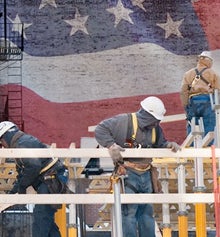Blog Post By: Jackie Roberts, EDF’s Director of Sustainable Technologies, National Climate Campaign
The President’s Better Buildings Initiative proposes to make American businesses more energy efficient through a series of new initiatives including newly designed tax incentives for building efficiency, better financing opportunities for commercial retrofits, a “Race to Green” for state and municipal governments that streamline regulations and attract private investment for retrofit projects, a “Better Buildings Challenge” to CEOs and University Presidents, and, finally, new training for commercial building technology workers. An analysis released today, conducted by the Political Economy Research Institute (PERI) of the University of Massachusetts at Amherst, showed that more than 114,000 new jobs, many of which would come from the hard-hit construction industry, would be created through the Better Buildings Initiative.
Insights into which firms will benefit, and where those jobs may be located, can be found in Duke University’s value chain analyses of three energy efficiency strategies for buildings: high efficiency windows and glass, smart grid, and LED lighting. If HOME STAR legislation is also passed, the firms involved in residential re-insulation and electric heat pump hot water heaters will also benefit.
Job creation is no mystery for the business world: it begins and ends with new customers. Every policy initiative that pushes more customers to U.S. firms identified in these value chain studies is critical. Hopefully, the Better Building Initiative is followed by a commitment to broader policy that puts us on a path to a low carbon economy. Broad policy creates customers for the many firms involved in the value chains for hundreds of climate solutions – whether renewables, energy efficiency, transportation, agricultural, industrial or other innovations. And, at the end of the day, customers = jobs.
